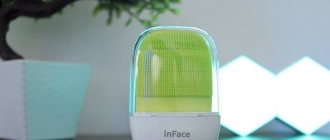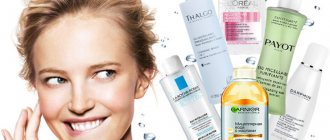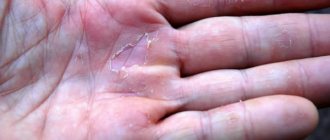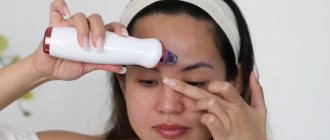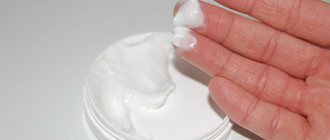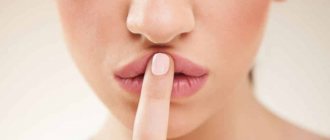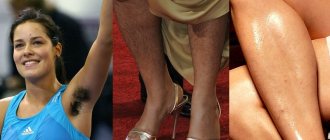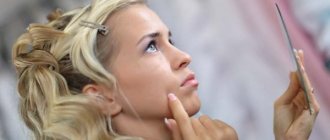Reasons for appearance
The condition of the skin can be used to judge a person's health. The presence of inflammatory elements indicates diseases and disorders in the body. Another factor influencing the appearance of acne is inadequate or irregular cleansing and the use of low-quality cosmetics.
Acne appears for the following reasons:
- excessive activity of the sebaceous glands;
- enlarged pores;
- epithelial keratosis inside the follicle;
- hormonal imbalances;
- puberty;
- premenstrual period;
- imbalance of the autonomic nervous system;
- changes in the composition of sebum;
- stress, depression, anxiety, anxiety;
- decline in immunity;
- heredity;
- using cosmetics that are not suitable for your skin type;
- gastrointestinal diseases;
- dysfunction of the thyroid gland;
- lack of vitamins in the body;
- excessive exposure to the sun and excessive visits to the solarium;
- high humidity and hot climate;
- skin dehydration;
- improper or unbalanced diet;
- alcohol and smoking abuse.
Types of facial skin diseases
Why do you think the facial areas are most often affected?
The skin on our face is capable of sensitively reacting to various unfavorable factors, as well as disruptions in the functioning of the body. Most often, the cause of most ailments is various malfunctions and pathologies in the functioning of internal organs.
For example, pimples most often occur due to hormonal imbalance, rosacea can occur after long-term treatment with antibiotics, and constant long-term exposure to the sun or solarium often results in rosacea.
Most illnesses are difficult to classify, since many pathologies carry similar symptoms, so it is very important to be able to distinguish one disorder from another.
Among the most common diseases, several separate groups can be distinguished:
NOTE!
To quickly get rid of blackheads, acne and pimples, as well as to rejuvenate your facial skin, we recommend that you familiarize yourself with this effective remedy .
Find out more...
- Acne. This disease appears after a malfunction of the sebaceous glands occurs, as a result of which they become inflamed - such a reaction can be observed under the influence of various factors. As a result, pus-filled swellings appear, which can disappear on their own after the hormonal system disorders pass;
- Cuperosis, which is manifested by the formation of small vascular networks on the surface. It is believed that its precursors are capillaries with weak walls, which provoke stagnation of blood in certain places. Patients should follow a diet without spicy foods, alcoholic beverages and coffee, and use strengthening cosmetics with vitamins;
- Rosacea. In this case, a small pinkish or red rash appears, thickening and dilation of blood vessels, and the eyes are often also affected. Sometimes the manifestations of this ailment can be confused with acne, but in most cases it is recognized by the characteristic pink color of the rash;
- Keratosis is a disorder characterized by excessive keratinization due to poor functioning of the exfoliating processes. It manifests itself in thickening of the skin and severe keratinization, which, as it progresses, begins to cause discomfort;
- Papillomas. They appear in the form of warts protruding above the surface, formed under the influence of a virus. Despite the fact that the papilloma virus is present in every human body, it manifests itself only when certain conditions apply: weakened immunity, lack of vitamins, pregnancy, stress or injury to the area. Sometimes growths can be malignant, so if they appear, it is necessary to consult a doctor;
- Melanoma is a tumor that can develop from a birthmark. Melanoma is often malignant, and the first sign of the disorder is an enlarged mole. In this case, the increase reaches more than 6-7 mm, and the formation has uneven edges and often changes its color;
- Chloasma is too strong pigmentation of individual skin areas. It is initially expressed as small brown spots, which later merge into single lesions. They do not bring much concern to the patient and are most often formed due to a failure of the nervous or hormonal system;
- Seborrheic dermatitis. It manifests itself when the composition of sebum is disrupted and is expressed in the form of inflammatory rashes of a papulosquamous nature. The rashes often become covered with scales and, growing over time, merge into single spots;
- Impetigo. This disease is of an infectious nature and is caused by staphylococci and streptococci - red bumps appear on the face, gradually turning into purulent blisters and, subsequently, into scabs. The disease mainly affects young children, but can also occur in adults;
- Vitiligo. Appears due to a lack of melanin and is expressed in the form of white or pink spots on the face. Sometimes the spots grow and become large lesions due to impaired pigmentation. Unfortunately, today it is not possible to reliably study the causes and mechanisms of spread of the disease.
This list can be continued further, because there are also dermatitis, eczema and psoriasis, as well as many other skin diseases, which we will definitely talk about in future articles.
We especially note that if you encounter suspicious symptoms, do not delay visiting a doctor! Any disorder is easiest to eliminate at an early stage.
Development mechanism - 4 factors
Acne is the result of certain disorders in the body. There are 4 factors that cause skin problems:
- Excessive secretion of sebum with a subsequent decrease in its bactericidal properties and changes in composition.
- Thickening of the stratum corneum of the skin inside the hair follicles. The result is a blockage of a protein called keratin. This is how the body reacts to local irritation.
- Active proliferation of propionobacteria acne due to the formation of sebaceous-horn plugs.
- Inflammation as a reaction to the activity of microorganisms.
Causes of diseases
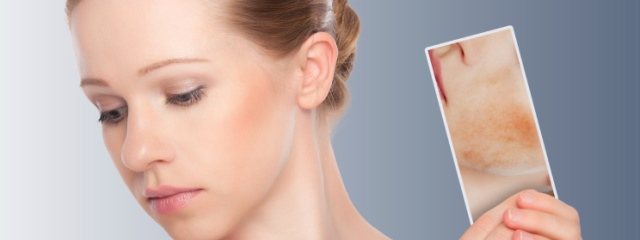
All skin problems are a consequence of some disorder in the body. Any infection that enters the body causes an inflammatory process in it. It is accompanied by the release of toxins that disrupt the functioning of internal organs. Toxins are powerful allergens and are neutralized by certain organs. If they no longer cope with detoxification, toxins are removed through the skin.
There is also such a thing as “internal allergens” . These include worms. These foreign structures contribute to allergies. Fungal cultures can also cause skin problems. For example, if a woman has candidiasis, a rash on the dermis is a symptom of this disease.
Dermatological diseases are often provoked by intestinal dysbiosis . When digestion is impaired, nutrients are not absorbed in full. Against this background, the body experiences a lack of nutrients. As a result, hair, skin and nails look unsatisfactory.
Another cause of skin diseases is stress . They weaken our immune system, which is why we begin to be attacked by infections, toxins, and there is a load on our “filter organs.”
Pustular infections most often affect those who have renal failure, central nervous system pathologies, obesity and diabetes mellitus, and impaired hematopoietic function.
Fungal diseases can be “caught” in public spaces. Most often this happens in a sauna or swimming pool. Animals are also carriers. Using a patient's belongings also poses a risk of infection.
At risk are people with varicose veins, excessive sweating of the feet, decreased immunity, and impaired skin integrity.
Viral infections often attack people with weakened immune systems. The virus, once in the body, remains in it forever. But he may never show himself. And if symptoms appear, treatment consists of eliminating them.
Types of inflammation on the skin
There are several types of skin inflammation:
- Acne is the result of blocked sebaceous ducts.
- Acne is an inflammation of the sebaceous glands and hair follicles with the subsequent formation of blackheads and nodules.
- Papules are subcutaneous inflammatory elements. They occur when secretions accumulate in the comedone, followed by tissue compression. As a rule, it comes to the formation of pus. In some cases they resolve before this point.
- Pustules are a rash in the form of small balls with purulent contents.
- Nodules are a type of papule. They have a purple tint and reach several centimeters in diameter.
- Cysts are large inflammatory elements with purulent filling. They leave traces in the form of scars, pigmentation, spots and enlarged pores;
- Comedones are plugs in the ducts of the sebaceous glands. They arise due to the accumulation or blockage of the mouths of the hair follicles by sebum. They are whiteheads (closed comedones) and blackheads (open comedones).
Fungal diseases
Facial skin diseases of this type are quickly transmitted from sick to healthy, and are therefore dangerous for others.
Dermatomycosis causes peeling of the skin, diaper rash, and blisters. The disease negatively affects the immune system and can cause allergies.
Pityriasis versicolor spreads over most of the skin. It appears as scaly spots of yellow and brown color.
With ringworm, plaques with pus and peeling appear on the skin. May develop into a chronic phase. If lichen is not treated in time, swelling and scabs with an unpleasant odor may appear.
Erythrasma is a fungal disease in which colored spots of a clear shape appear on the skin. It can also go into a chronic phase.
Actinomycosis is a bluish-purple induration with the formation of a fistula. The seal has a spherical shape. If the pathology is not cured, tissue necrosis and deep ulcers will develop. Sometimes it affects internal organs.
Classification by age
At every age, certain types of acne occur. There is the following classification:
- Newborn acne in the form of closed comedones. The reason for its appearance is the entry of maternal sex hormones into the baby’s blood. It goes away without a trace after a few weeks if you follow the rules of hygiene.
- Infant acne in the form of papules and inflammatory elements. The reason for the appearance is an excess of testosterone levels in plasma.
- Teenage and youthful acne in the form of papules and pustules with purulent contents. The reason for its appearance is puberty.
- Adult (later) acne occurs in men and women after 30 years of age. The reason for its appearance is the presence of serious diseases, including hormonal ones.
Skin and age
Acne often bothers middle-aged people, when the first wrinkles already appear, but the “problematic” skin still persists. The reasons are age-related thickening of the skin, decreased local immunity and endocrine disorders. At this age, acne is located mainly along the oval of the face and on the cheeks, where thin convoluted glands lie.
What to do? The optimal result is achieved by combining peeling (with salicylic or glycolic acid) with mesoimmunocorrection. Mesoimmunocorrection is the use of mesotherapy products with hyaluronic acid, vitamins, amino acids that stimulate the skin’s immunity, promote its hydration, and enhance local metabolism and blood circulation. The combination of these methods not only has anti-acne effectiveness, but also helps prevent age-related changes. The skin becomes more elastic, smooth and fresh, which is important for most patients over the age of 30.
Attention! A radical remedy that permanently or permanently reduces the secretion of the sebaceous glands and thins the upper parts of the skin (and therefore cures acne) is the vitamin A drug Roaccutane, which is taken daily for several months and has a cumulative effect. However, you should not delude yourself and self-medicate. This drug is indicated only in cases of severe or moderate disease, and its use requires preliminary examination, has contraindications and can sometimes be tolerated with the development of dry skin or other manifestations that are eliminated by certain therapeutic measures. Treatment should be carried out under the supervision of a doctor and against the background of regular assessment of blood tests.
Four degrees
The degree is determined by the external signs of the disease. The number of comedones and various inflammatory elements is taken into account. There are 4 degrees in total:
- Easy. Up to 10 blackheads and comedones.
- Average. From 10 to 30 comedones and papules with purulent contents.
- Heavy. A large number of comedones, several dozen papules and a small number of pustules.
- Very heavy. The skin is affected by papules and pustules. There are more than 5 knots. I am worried about pain.
Types of treatment depending on the type of acne
Acne treatment is selected after preliminary determination of the type of inflammatory elements. Carried out under the supervision of a specialist.
Only - open and closed acne
Treatment is based on the use of retinoids, Azelaic acid or salicylic acid. To achieve the best result, additional medications may be prescribed.
Mixed form - acne and pimples
One of the following complexes is prescribed:
- retinoid and benzene peroxide;
- retinoid and antibiotic;
- retinode, benzene peroxide and antibiotic;
- azelaic acid and benzene peroxide;
- azelaic acid and antibiotic.
If the effect is mild, a retinoid and an oral antibiotic are additionally prescribed.
Only acne
Treatment is based on the use of a drug with benzene peroxide. If the effect is insufficient, other means are prescribed:
- antibiotic gel;
- a combination drug of benzoyl peroxide and antibiotic.
If the desired result is not achieved, an additional course of oral antibiotic is prescribed.
Cystic and nodular forms of acne
To treat such forms, oral antibiotics are used. Additionally, one of the complexes of drugs is used to combat mixed forms of acne.
If the result is weak, isotretinoin may be prescribed for internal use. But only in the absence of contraindications. If this remedy does not help, hormonal therapy is considered by an endocrinologist.
Folk remedies for the treatment of acne on the face
Traditional methods have proven effective in the fight against acne. Natural remedies help relieve inflammation and reduce the number of rashes.
Homemade cosmetics can be stored in the refrigerator for no more than 30 days. Immediately after cooking, place in a dark container with a tight-fitting lid.
Masks
They soothe inflammation, relieve redness and have a drying effect. After use, be sure to moisturize the skin.
- Clay.
Take 2 tbsp. l. black clay. Dilute with chamomile or calendula decoction to a mushy consistency. Apply to face and leave for 10-15 minutes. Repeat 2 times a week.
- Oatmeal.
Take 2 tbsp. l. crushed oatmeal flakes. Mix with 1 tbsp. l. kefir Leave for five minutes. Apply to skin and leave for 10 minutes. Repeat 2-3 times a week.
- Tomato.
Peel the skin from the tomato and mash thoroughly with a fork. Add 1 tsp. soda Apply to skin and leave for 20-25 minutes. Repeat once a week.
Ointments
Used as the main remedy for acne treatment. Apply morning and evening or once a day.
- Take 3 tbsp. l. olive oil, 1 tbsp. l. shea butter and 2 tsp. beeswax. Melt in a water bath. Add 2 capsules of vitamin E and lecithin to the tip of a knife. Mix 1 tbsp. l. rose water and 1 tbsp. l. aloe juice Pour into the butter mixture and stir.
- Pour 100 ml. boiling water 2 tsp. dry chamomile leaves and 1 tbsp. l. birch buds. Cool. Melt 1 tsp in a water bath. beeswax and 1 tbsp. l. olive oil. Add 3 drops of vitamin A, 1 tbsp. l. butter and strained herbal decoction. Leave on the stove for a minute, stirring constantly. Remove from heat and cool.
- Mix 1 tbsp. l. honey, 1-2 drops of iodine, 1 tsp. Vaseline and 1 tbsp. l. castor oil.
Lotions
Cleanse the skin and help relieve inflammation. They have a tonic effect. To achieve good results, apply daily morning and evening.
- Pour 1 tbsp. l. dry wormwood with a glass of boiling water. Leave for half an hour. Strain. Add 30 ml. freshly squeezed viburnum juice and 1 tsp. salt.
- Mix ½ cup of rose water, a quarter cup of still mineral water, 1 tsp. apple cider vinegar, ½ tbsp. l. sweet almond oil, 5 drops tea tree oil, 2 drops lavender oil. Leave for 4 days. Shake before use.
- Take 1 tbsp. l. apple cider vinegar, 1 tbsp. l. water, 5 drops each of geranium, palmarosa and tea tree essential oils, 1-2 ml. polysorbate 80. Mix and leave for 2 weeks. Shake before use.
What medications are suitable for treating acne
Medication is another option for treating acne. Special products can be purchased at the pharmacy. However, many of them have contraindications, so it is recommended to consult a specialist.
Pills: hormones or antibiotics?
Prescribed by the attending physician after a preliminary examination. It is necessary to correctly determine the type of inflammation, the degree of acne and the form of the disease. The dosage is selected individually.
The following types of tablets are most often prescribed for the treatment of acne:
- Antibiotics - erythromycin, levomycin, metronidazole, tetracycline, doxycycline and others.
Each drug has a whole range of contraindications. For example, pregnancy, breastfeeding, individual intolerance to the components of the composition.
- Hormonal - Jess, Yarina, Janine, Diane, Median and others.
They have contraindications such as pregnancy, breastfeeding, individual intolerance, diseases of the gastrointestinal tract, liver, kidneys and others.
- Retinoids. Roaccutane is considered the most popular drug in this group.
The drug has many contraindications and side effects, so it is prescribed only after examination. It has such contraindications as children under 12 years of age, pregnancy, planning pregnancy, breastfeeding, hypervitaminosis A, individual intolerance and others.
Creams
Used to treat acne at different stages. The most popular drugs:
- Bepanten is a universal remedy for skin treatment.
Helps not only relieve inflammation, but also eliminate irritation, dryness and flaking. Contraindication: hypersensitivity to the components of the composition.
- Boro Plus is a cream for the treatment of acne and post-acne.
Accelerates regeneration and has an antiseptic effect. Contraindication: individual intolerance to the components of the composition.
- Levomekol is a remedy for the treatment of ulcers.
Relieves inflammation and swelling, draws pus to the surface. With prolonged use, addiction occurs. Contraindication: allergy to chloramphenicol, methyluracil, ethylene glycol.
Gels
They are considered an alternative to creams and ointments. They have a light texture, so they are quickly absorbed and do not leave any grease on the skin. The following drugs help in the treatment of acne:
- Effezel is a gel for the treatment of acne at different stages.
Has antibacterial and anti-inflammatory effects. Contraindication: hypersensitivity to any component of the composition.
- Dalatsin is a universal gel for the treatment of various types of acne.
Used in courses of no more than 5 weeks. Used only as prescribed by a specialist in the absence of contraindications.
- Metrogyl is a gel for the treatment and prevention of rashes.
Often prescribed in combination with other drugs. Has various contraindications. For example, age up to 12 years, pregnancy, lactation and others.
Vitamins
Help speed up the acne treatment process. However, in case of overdose, a reverse reaction is possible. The following vitamins are used:
- retinol (A);
- tocopherol (E);
- L-isomer of ascorbic acid (C);
- niacin (nicotinic acid, PP);
- B vitamins.
Ointments
They vary by type. Anti-inflammatory agents are popular. They have antiseptic and bactericidal properties. They are characterized by low cost, minimal number of contraindications and high efficiency. Zinc, sulfur, heparin and ichthyol ointments have proven themselves well.
Antimicrobial agents are also in demand. Such ointments inhibit the growth of pathogenic bacteria and prevent the spread of infection. Among them are Skinoren, Kuriosin, Cynovit.
These drugs are used exclusively in courses and have contraindications.
Another type is hormonal ointments. Used only as prescribed by a doctor. The effect is achieved in a short time, however, addiction occurs just as quickly with a subsequent decrease in effectiveness. Advantan, Sinaflan, and Fluorocort are used to treat acne.
Skin and nutrition
The state of skin secretion depends on the nature of the diet: the more sweets you eat, the thicker, more abundant and “tastier” sebum is produced for bacteria.
What to do? Sometimes changing your diet to limit sweets and starchy foods helps improve your skin condition without treatment.
In some cases, acne on the face is of allergic origin and is associated with intolerance to certain types of food. Then the rash intensifies after various kinds of feasts. Such patients are characterized by a combination of skin rashes with other manifestations: for example, fatigue, headache, digestive disorders, bad breath, general skin sensitivity with a tendency to itching and redness. A surge in requests from patients with this kind of acne to a dermatologist is observed after the New Year celebrations, and in the summer - after returning from a vacation from Turkey and Egypt with their abundant buffet.
What to do? For rashes associated with food intolerances, the best treatment is diet selection based on a blood test to determine food compatibility. This is an immunological analysis that evaluates specific antibodies (Ig G and IgE) to various products, the number and activity of cells that mediate the allergic reaction.
Salon treatments for treatment
Modern cosmetology offers a number of procedures to treat problem skin. The most popular are:
- Mesotherapy - injections of therapeutic meso-cocktails.
The composition is selected individually. Antibacterial and restorative substances, as well as vitamins, are used.
- Ozone therapy - ozone injections.
Injection of a mixture of gases - ozone and oxygen - under the skin. It has an antimicrobial, sebum-regulating and healing effect.
- Peeling is the removal of the stratum corneum of the skin.
In the fight for clear skin, chemical, glycolic and multi-acid peels are used.
- Magnetotherapy is the effect of various magnetic fields on the body.
Promotes the resorption of nodules and ulcers. Helps eliminate acne and scars.
- Darsonvalization is the effect of alternating pulse currents of high voltage and frequency.
Has anti-inflammatory and sebum-regulating effects. Promotes narrowing of pores, healing of scars, scars and post-acne.
Recommendations from a dermatologist for acne treatment can be found in the video.
How to fight acne with diet
Acne is often associated with poor diet. It is worth reviewing your diet and including foods that contain:
- fiber - fruits and vegetables;
- proteins - lean meats, fish, poultry, seafood, dairy and fermented milk products;
- vitamin A - spinach, carrots, cucumbers, black currants, apricots, sorrel, olive oil, beef liver;
- vitamin E - pistachios, almonds, peanuts, walnuts;
- vitamin B - buckwheat, wheat cereal, legumes, cabbage, cheeses;
- omega acids - fish oil, flax seeds;
- zinc - stewed beef, asparagus, liver, bran.
It is recommended to steam dishes and reduce the amount of salt, spices and fats.
Some foods will have to be excluded from the diet. Otherwise, the diet will not give the desired result.
Black list:
- bakery products made from fine flour;
- fast food;
- sweets;
- hot, salty, spicy;
- fatty food;
- smoked meats;
- canned food;
- fatty meat and lard;
- carbonated drinks;
- strong tea and coffee;
- alcohol.
Treating problem skin from the inside
You need to start treating problem skin from the inside. To do this you will have to see a doctor. With its help it will be possible to find out why the skin becomes oily and acne appears on it. There may be several reasons for this:
- poor nutrition;
- hormonal disorders;
- poor bowel function and accumulation of toxins in the body.
Poor nutrition
If the problem is poor nutrition, then you will need to normalize it. It is necessary to exclude fatty and fried, spicy and salty, sweet and baked foods from the diet. It will be necessary to eat more dairy products, vegetables, fruits, and cereals.
Hormonal disorders
If the problem is a hormonal imbalance, then drug treatment will be required. Usually, medications with a small content of certain hormones are used, which helps normalize the body’s functioning and get rid of problems on the face.
Poor bowel function
If the intestines are not functioning well and are clogged, a course of brewer's yeast is most often prescribed. They quickly remove toxins that have accumulated in the body. Brewer's yeast also has a beneficial effect on the functioning of the gastrointestinal tract.
Tips for caring for problem skin
Regular cleansing is the key to clean and healthy skin. However, the procedures must be carried out correctly. While washing, you need to make gentle massage movements with the pads. It is advisable to foam the cleanser in your hands in advance. Brushes and hard sponges can damage the skin and spread infection, so you will have to discard them.
It is better to wipe your face with disposable paper napkins without dyes or fragrances. You can also have a separate face towel, if you can change it to a clean one every 2-3 days.
After cleansing, try to wipe your face with a cotton pad moistened with tonic. It is advisable to use a product with an anti-inflammatory complex. It is worth considering that the cream will be absorbed better if you apply it to slightly damp skin from the tonic. The active components will penetrate into the deep layers of the epidermis along with water.
Preventive measures to prevent acne
Any remedy gives a temporary effect in the absence of proper care. Recurrence of acne can be avoided if you continue to monitor your skin after completing therapy. This will help:
- application of cosmetics according to skin type;
- using cream for acne-prone skin;
- using acne masks 1-2 times a week;
- change the pillowcase every 2-3 days;
- providing a separate towel for the face;
- undergoing routine examinations to monitor health status;
- selection of cosmetics without artificial colors and flavors;
- diet;
- refusal of hats made of synthetic materials.
You need to be prepared that fighting acne is a long process. It is necessary to identify the cause and choose the right treatment. This will require a medical examination and consultation with a dermatologist. Following diet and hygiene rules will help speed up the skin restoration process.
Skin and hormones
For teenagers and young adults, the main reason for the development of acne is a sharp increase in sebaceous secretion and thickening of the upper layers of the skin from the onset of puberty.
What to do? In this case, the ideal solution would be a combination of local homeopathic treatment aimed at liquefying thickened sebaceous secretions and the use of peels with salicylic or glycolic acid. In the acute period, when there are bright red swollen nodules on the face, electrocoagulation, local antibiotic or ozone therapy will be effective. In the first stages of treatment, the so-called “cleaning” may be advisable, when the sebaceous glands are mechanically freed from the secretions that clog them. Cleansing is not a truly therapeutic measure, since in the absence of systematic treatment, the sebaceous glands very quickly become clogged again, but in the first stages it can be useful in ensuring access of medications to the walls of the gland.
In some cases, an undeservedly forgotten quartz lamp, which was previously widely used to treat skin diseases, gives a very good effect on inflammatory acne. Currently, such a lamp can be purchased at home. However, only a specialist can give recommendations on purchasing such a lamp and recommend a course, since in some cases its use will be contraindicated, which, however, applies to any method of treatment.
